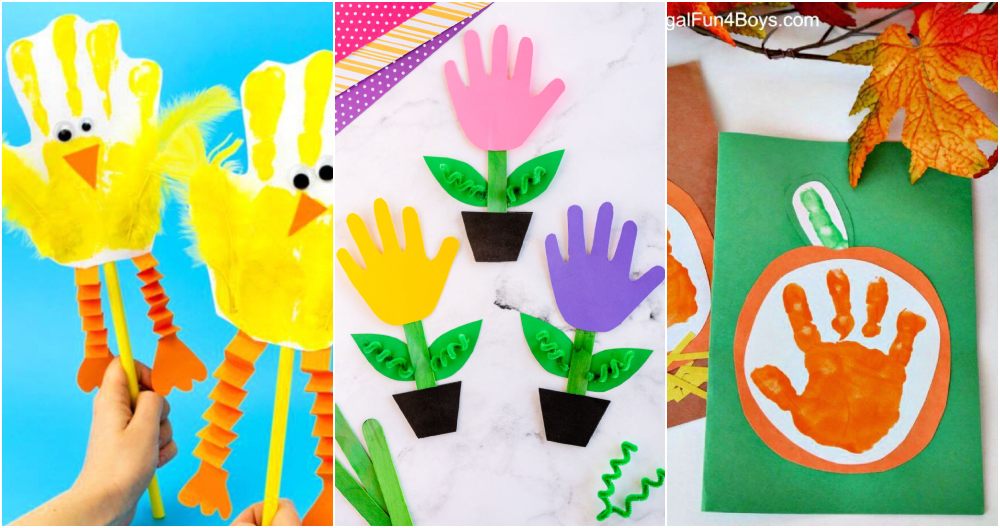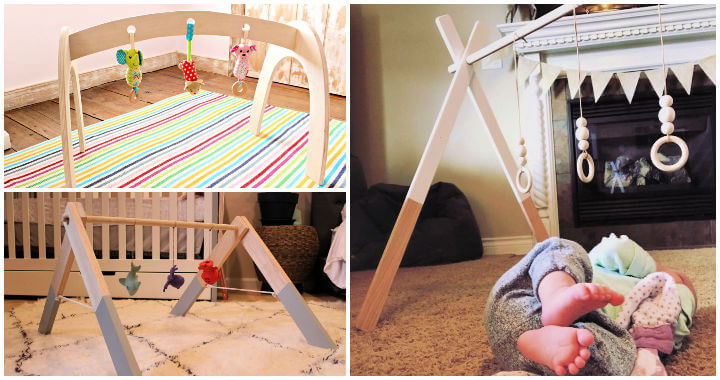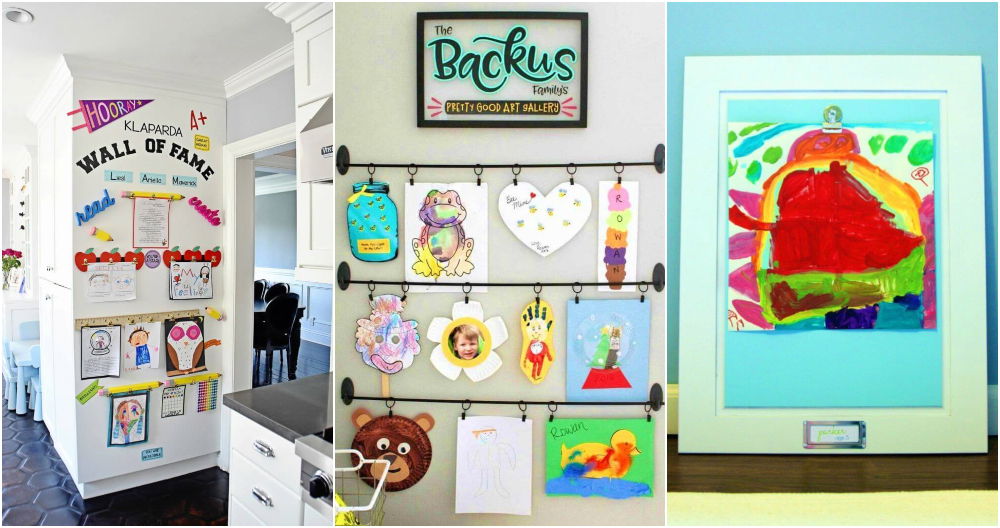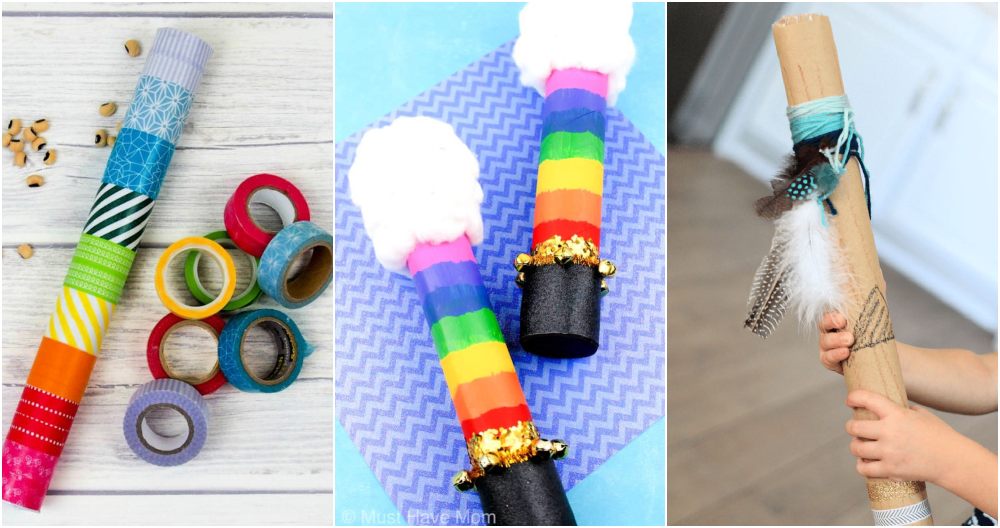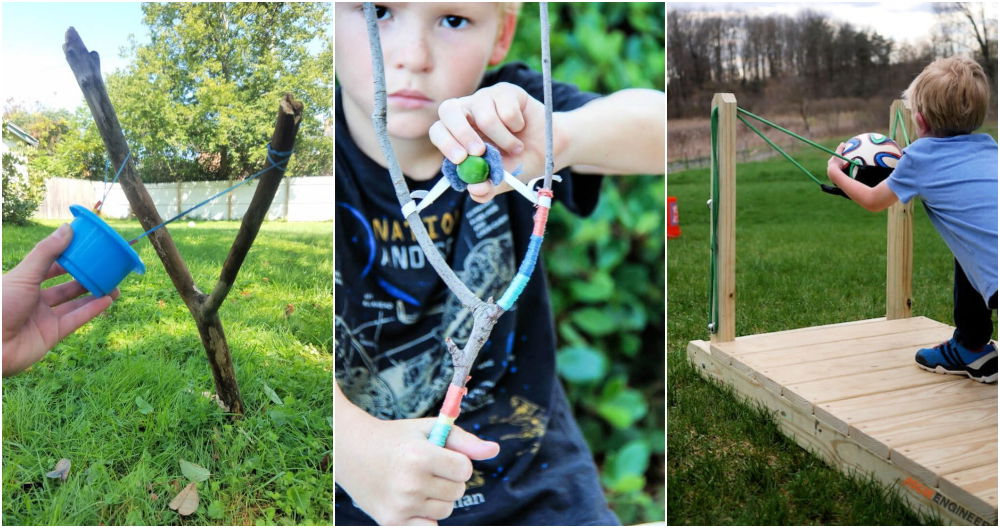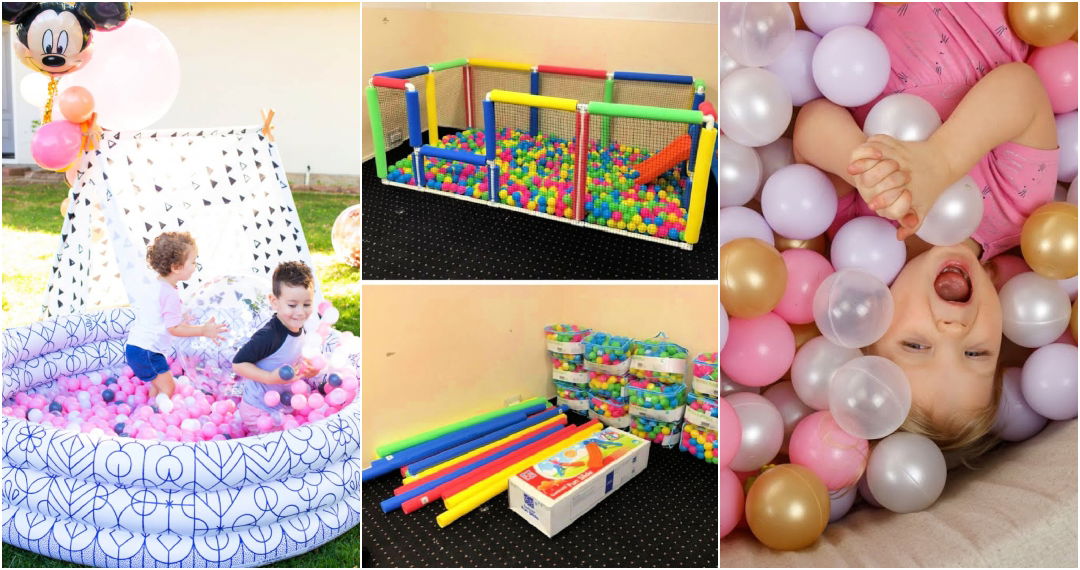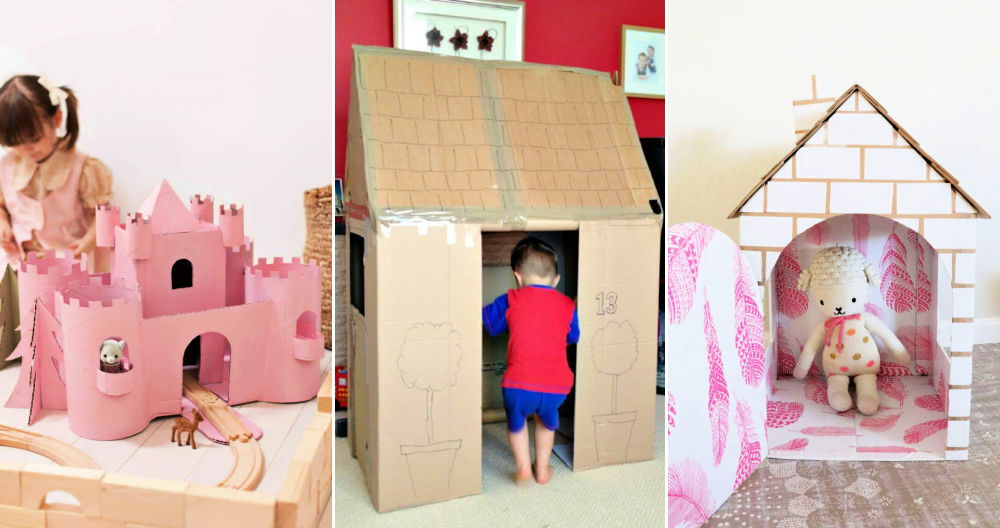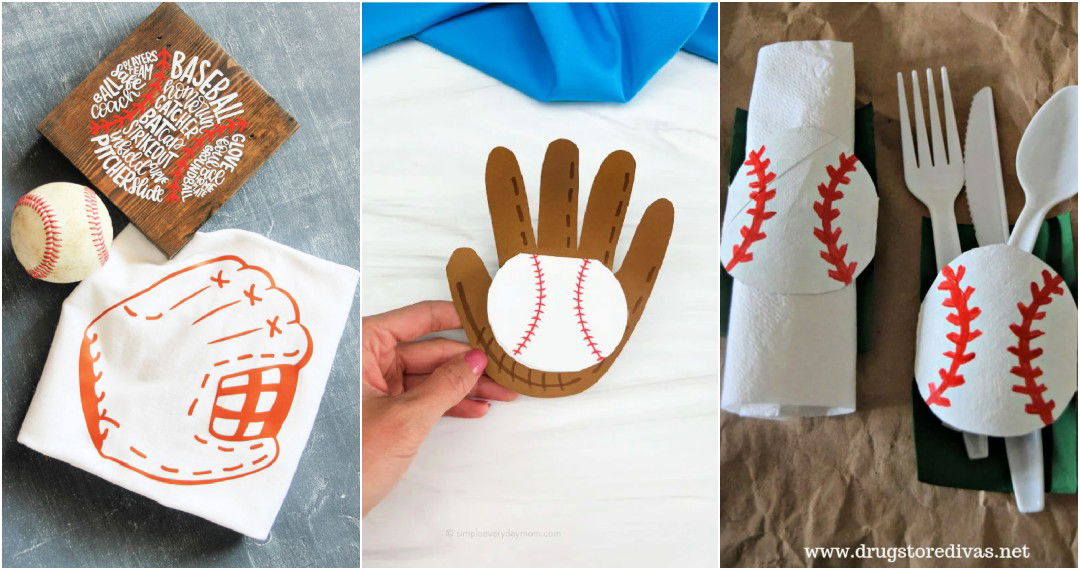Crafting a popsicle stick catapult can be a fun and engaging project for all. This guide offers 20 easy popsicle stick catapult designs that show you precisely how to make one from scratch. It's not only a chance to make something unique but also an opportunity to learn and apply basic principles of physics. Our steps are detailed, clearly outlined, and perfect for crafting enthusiasts at any skill level.
As we delve into the materials needed and step-by-step instructions for making the base, building the launching arm, and assembling the catapult, you'll see just how straightforward making your own catapult can be. Each segment is designed to simplify the process, making it accessible and enjoyable. Ready to start building? The next section is the perfect place to begin your journey into crafting an exciting, operative popsicle stick catapult.
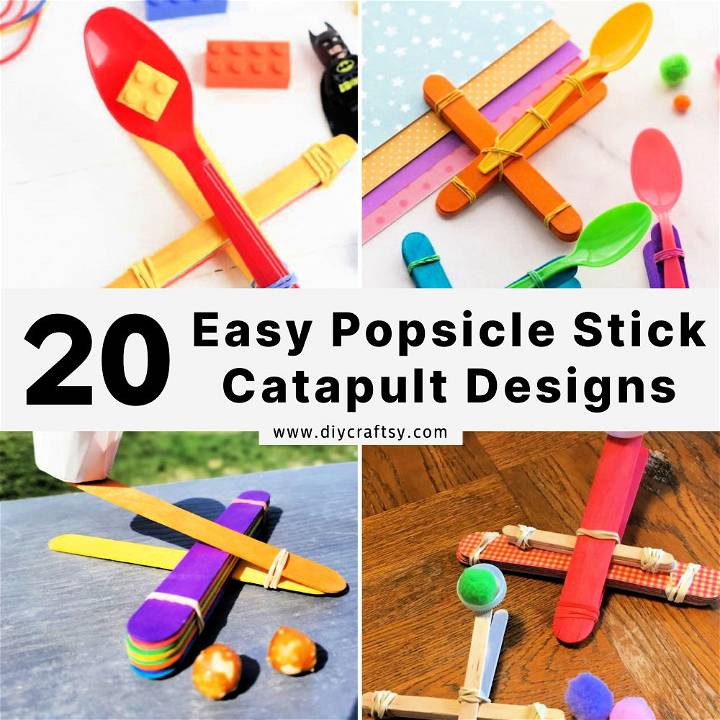
Why Make a Popsicle Stick Catapult?
Making a popsicle stick catapult can be more than just a fun craft. It offers numerous benefits that make it an enriching activity for individuals of all ages. Here's why you should consider making one:
- Educational Value: It introduces basic principles of physics, such as leverage, tension, and propulsion. It's a hands-on way to explore STEM (Science, Technology, Engineering, Math) concepts.
- Creativity and Innovation: Designing and building a catapult encourages creative thinking and innovation. It allows for experimentation with different designs to see what works best.
- Fine Motor Skills: Assembling the catapult involves picking up small items, using glue, and maneuvering rubber bands, which can help improve fine motor skills.
- Problem-Solving Skills: You'll likely encounter challenges while making your catapult. This requires critical thinking and problem-solving to overcome, fostering these essential skills.
- Teamwork and Communication: Working on this project with others encourages teamwork and communication. Sharing ideas and solutions can lead to a more successful creation.
- Fun and Satisfaction: There's a great deal of satisfaction in seeing your creation successfully launch an object. It's also just plain fun, providing a great source of entertainment.
- Inexpensive: Popsicle sticks and the other materials needed are quite cheap and easily accessible, making this a budget-friendly activity.
Making a popsicle stick catapult is not only enjoyable but also enriches learning and skill development. It's a simple project with powerful benefits.
How to Make a Popsicle Stick Catapult
Making your very own popsicle stick catapult is not only a fun project but also a great way to explore basic engineering and physics concepts. This guide will walk you through each step, ensuring that the process is easy to follow and enjoyable. Whether you're engaging in a classroom activity, looking for a rainy-day project, or celebrating National Inventors Day, this DIY catapult promises hours of fun.
Materials Needed
- Popsicle sticks (9 sticks)
- Bamboo skewers (3 sticks)
- Masking tape
- A plastic drinking straw (cut to about 2 inches)
- A small plastic cup (for projectiles)
- A rubber band
- Scissors (for cutting the straw and tape)
Making the Base
- Forming Triangles: Start by making three triangles from your popsicle sticks. Take three sticks and tape them together at each end to form a triangle. Ensure the tips of your sticks do not touch - this will be crucial for stability. Repeat this process until you have three triangles.
- Assembling the Base: Now, take your triangles and tape them side by side to form a pyramid shape. This will serve as the base of your catapult. Use 2-3 pieces of tape per side to ensure that the base is sturdy and secure.
Building the Launching Arm
- Preparing the Skewers: Align your three bamboo skewers and tape them together at one end, about two inches from the pointed end. This space will accommodate the straw, acting as a hinge.
- Adding the Straw: Slide the cut straw onto the skewers, pushing it about an inch down. If all three skewers won't fit inside the straw, two will suffice. Secure the straw with tape at one end to prevent it from sliding off.
- Stabilizing the Arm: Take two more popsicle sticks and attach them perpendicular to the skewers, one in front and one behind, around the middle area. Tape them securely to add stability to the arm.
Assembling the Catapult
- Attaching the Arm: Bend the straw slightly to make a hinge effect. Tape the straw to one side of the base, ensuring it is firmly attached and can pivot at the hinge.
- Adding Tension with a Rubber Band: Wrap a rubber band around the base's sticks and thread it through the other side of the base, making tension against the pivot point of the straw. Carefully wrap it back around to secure it. This tension is crucial for the catapult mechanism.
- Securing the Projectile Container: Tape the plastic cup to the outer end of the arm, leaving enough stick beyond the cup to grab onto. This will hold whatever you choose to launch.
Using Your Catapult
- Place a lightweight object, such as a cotton ball or a small foam ball, into the cup.
- Hold the base with one hand for stability.
- Pull back on the launching arm with your other hand, then release to launch your projectile. Experiment with different angles and tensions to see how far you can get your objects to fly.
Video Tutorial
For a step-by-step video tutorial on making a popsicle stick catapult, watch this helpful guide.
It pairs well with this written guide, adding a dynamic visual perspective to the crafting process and making the instructions even clearer.
FAQS About Popsicle Stick Catapults
Making a popsicle stick catapult can be a fun and educational project for people of all ages. Here are some frequently asked questions to help you get started and make the most out of your crafting experience.
What materials do I need to make a popsicle stick catapult?
- Popsicle sticks (9 or more depending on design)
- Bamboo skewers (3 sticks for certain designs)
- Masking tape or rubber bands
- A plastic drinking straw (cut to about 2 inches)
- A small plastic cup or a spoon (for projectiles)
- Scissors (for cutting the straw and tape)
- A rubber band for making tension
Can I make a popsicle stick catapult without bamboo skewers?
Yes, you can make a popsicle stick catapult without bamboo skewers by using more popsicle sticks to make the frame and the lever arm. Rubber bands can be used to make tension instead of using skewers as a pivot.
What can I use as projectiles for my catapult?
Lightweight objects such as cotton balls, mini marshmallows, paper balls, or small foam balls are ideal as they are safe and easy to launch. Avoid using hard or heavy objects to prevent injury or damage.
How can I make my catapult launch farther?
To make your catapult launch farther, you can:
- Increase the tension on the rubber band for more propulsion power.
- Adjust the angle of the launching arm for optimal trajectory.
- Experiment with the weight of the projectile; sometimes lighter or slightly heavier objects can travel further.
Is making a popsicle stick catapult safe for kids?
Yes, making a popsicle stick catapult is generally safe for kids under adult supervision. Ensure that safe projectiles are used and that children understand not to aim the catapult at people or fragile objects. Also, supervise the use of scissors or any cutting tools required for the project.
How can making a popsicle stick catapult be educational?
Making a popsicle stick catapult can introduce basic principles of physics, such as leverage, tension, and propulsion. It also encourages problem-solving, critical thinking, and understanding of STEM (Science, Technology, Engineering, Math) concepts in a fun and hands-on way.
Can I decorate my popsicle stick catapult?
Absolutely! Feel free to decorate your popsicle stick catapult with paint, markers, stickers, or any other craft supplies. This not only adds a personal touch but also makes the crafting process even more enjoyable.
How can I fix a catapult that's not working properly?
If your catapult isn't working as expected, check the following:
- Ensure the base is stable and securely taped or glued.
- Make sure the launching arm is properly attached and can pivot.
- Adjust the tension on the rubber band; too little or too much tension can affect performance.
- Double-check the alignment of all parts for any misalignment that could hinder motion.
20 Easy Popsicle Stick Catapult Designs (How to Make)
Discover 20 simple popsicle stick catapult designs with step-by-step instructions. Learn how to make these fun projects at home today!
1. Making a Catapult Out of Popsicle Sticks
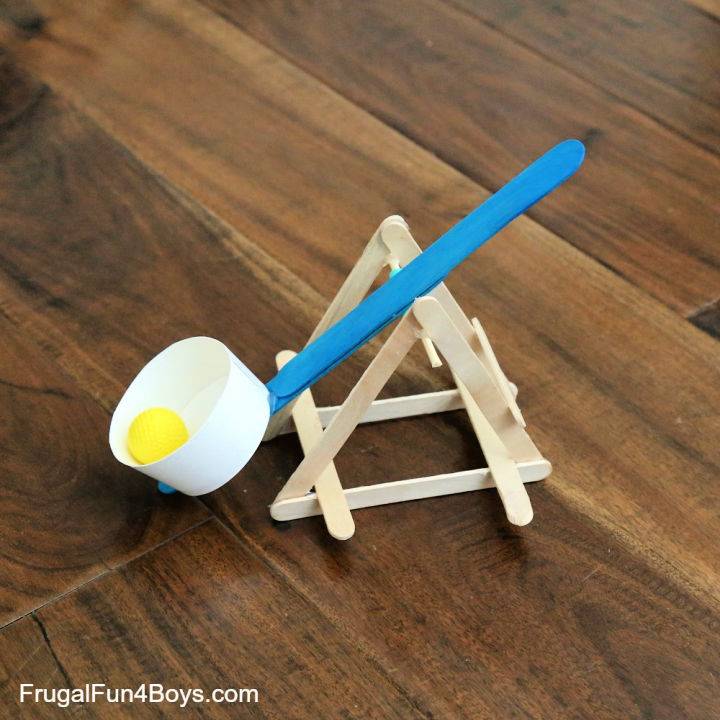
Delve into a creative stem project with frugal fun for boys and girls That will captivate kids and adults alike. Learn how to construct an effective catapult using simple materials like popsicle sticks, hot glue, and a few household items. Perfect for an engaging hands-on activity, this guide provides clear, step-by-step instructions to make a mini-engineering marvel that can launch lightweight objects with ease.
Foster a love for science and innovation as you explore the mechanics behind this powerful little launcher, ideal for educational play or a playful competition. Get ready for hours of entertainment as you put together your very own popsicle stick catapult.
2. How to Make a Popsicle Stick Catapult
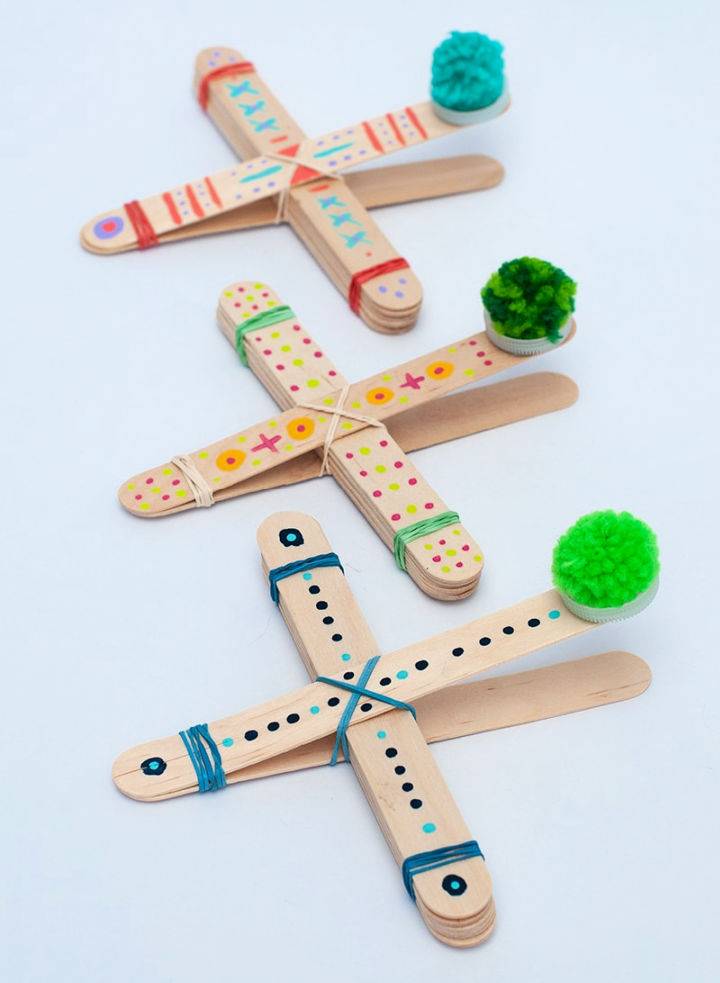
Ready to engage your kids in a fun and educational activity? Learn how to make a DIY popsicle stick catapult with the help of crafts by courtney! This project is perfect for young minds eager to explore the principles of stem, including engineering, mathematics, and science concepts like gravity and force. Simple materials like jumbo wood craft sticks, rubber bands, and bottle caps are all you need to get started.
Follow easy step-by-step instructions, encourage your children to customize their catapults with paint, and conduct experiments to see how far they can launch objects. This hands-on task not only stimulates creativity but also nurtures problem-solving skills and understanding of physical laws in a playful environment. Get ready to build, paint, and launch into learning!
3. DIY Popsicle Stick Catapult for Stem Activity
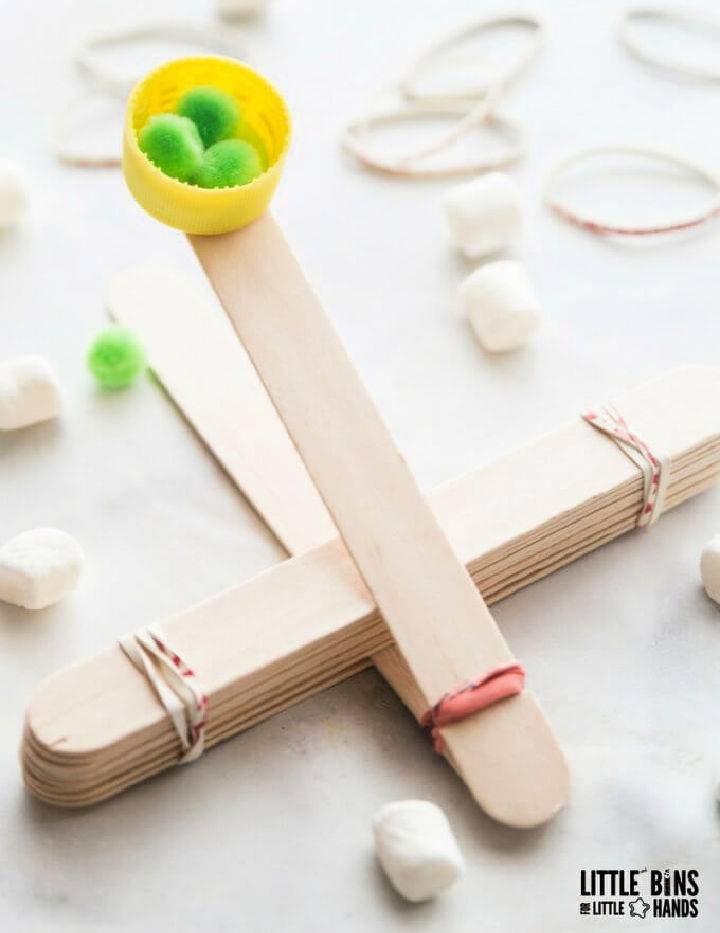
Looking to engage kids in a hands-on STEM activity? little bins for little hands Offers a creative way to dive into physics with a simple DIY popsicle stick catapult. Not only is this project easy and fun, but it also introduces essential scientific concepts such as energy, motion, and newton's laws.
Step-by-step instructions, accompanied by a helpful video, guide you through building your catapult, and the free printable worksheet aids in recording and analyzing your findings. Ideal for classrooms or at-home learning, this catapult project is a fantastic way to merge play with education, helping children understand the mechanics behind the fun.
4. How to Make a Popsicle Stick Catapult
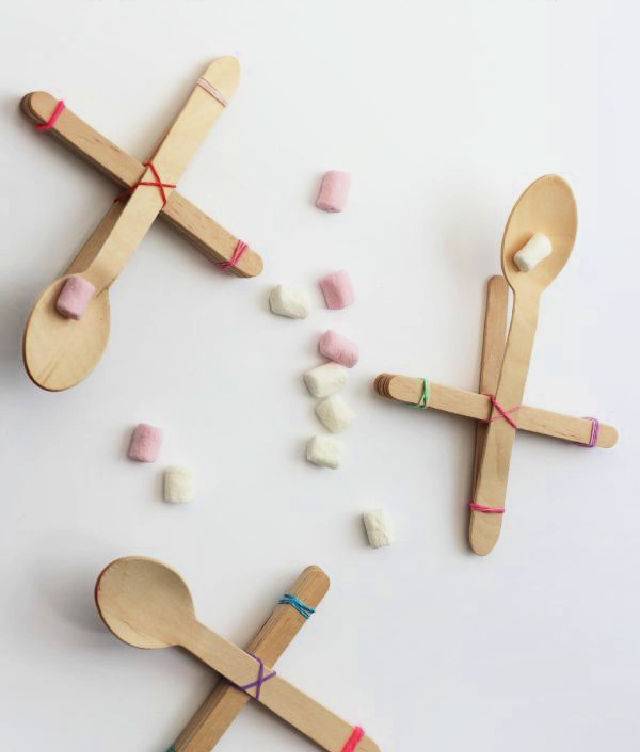
Looking to engage in a hands-on science project with kids? Mum in the madhouse Offers an easy and fun way to make a popsicle stick catapult, turning simple household items into a mini engineering marvel. Using just lolly sticks, a wooden spoon, and elastic bands, you can craft a device that teaches fundamental physics principles.
It's an instructive activity that demonstrates motion laws, energy storage, and projectile launching in an engaging manner. Plus, with suggested safe and soft projectiles like marshmallows or pom-poms, it's designed for safe play. Gather your materials and prepare for an educational adventure in crafting and basic mechanics.
5. Homemade Popsicle Stick Catapult
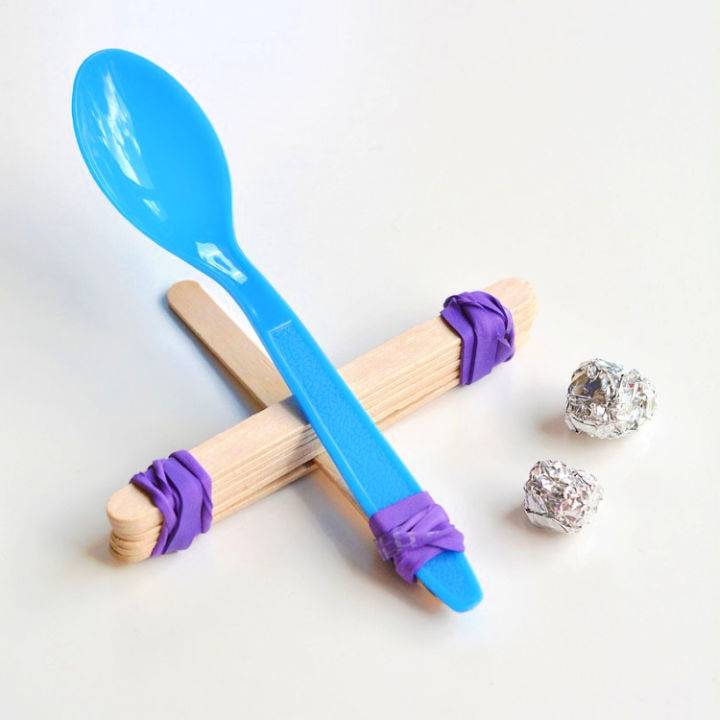
For crafting enthusiasts and curious learners, the One Little Project guide on making a popsicle stick catapult offers a blend of fun and education. This engaging activity not only keeps participants entertained but also introduces them to fundamental physics principles.
Step-by-step instructions make assembly straightforward, and the project is suitable for a wide age range, making it perfect for family activities or educational settings. Experiment with different projectiles and angles to explore the concepts of potential and kinetic energy in a hands-on manner. Gather your popsicle sticks, rubber bands, and a plastic spoon, and get ready to launch into a memorable learning experience.
6. Simple DIY Popsicle Stick Catapult

Making a popsicle stick catapult is an engaging and educational activity for kids, ideal for science projects or just for fun. In this simple guide on Science Project Ideas, you'll find a step-by-step process for assembling your own mini catapult using basic materials like popsicle sticks, rubber bands, and a small container. As children build their catapults, they not only get a chance to craft a playful toy but also learn fundamental principles of physics, such as levers and the conservation of energy.
With clear instructions and a list of required materials, this project encourages hands-on learning and creativity while ensuring safety with proper supervision. Enjoy this practical science experiment that demonstrates the power of potential and kinetic energy in an accessible and enjoyable way.
7. Popsicle Stick Catapult Instructions
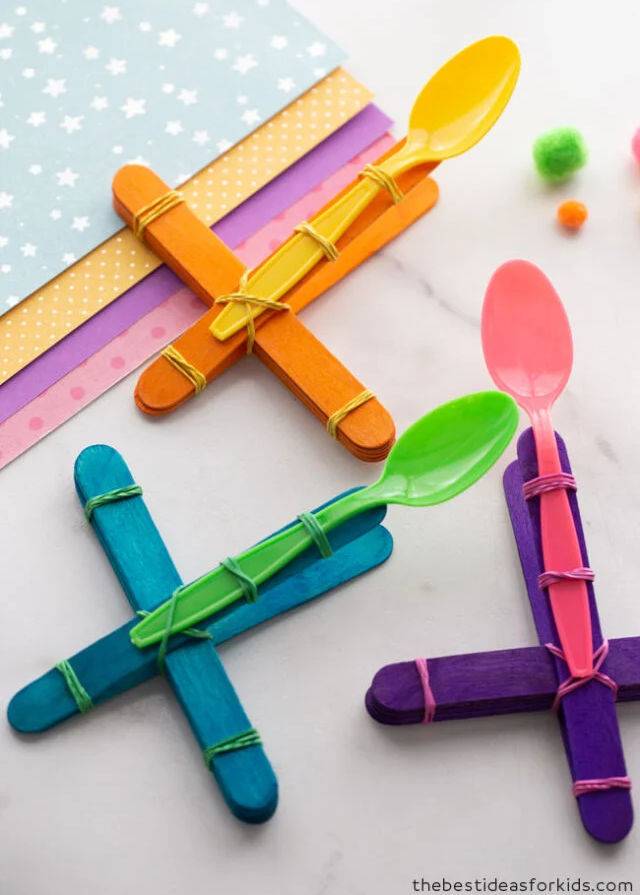
Delve into the world of DIY ideas with the best ideas for kids' guide to making a popsicle stick catapult. This fun and educational craft is perfect for engaging children in STEM activities while they construct a working model with simple materials. With clear, step-by-step instructions, you'll learn to assemble a catapult using jumbo craft sticks, colorful rubber bands, and a plastic spoon.
Kids will be thrilled to see their handmade catapults launch pom poms across the room. It's an instructive and enjoyable way to explore physics and mechanics at home or in a classroom setting. Get ready for a hands-on experience that encourages experimentation and friendly competition.
8. DIY Popsicle Stick Catapult - Fun for Kids
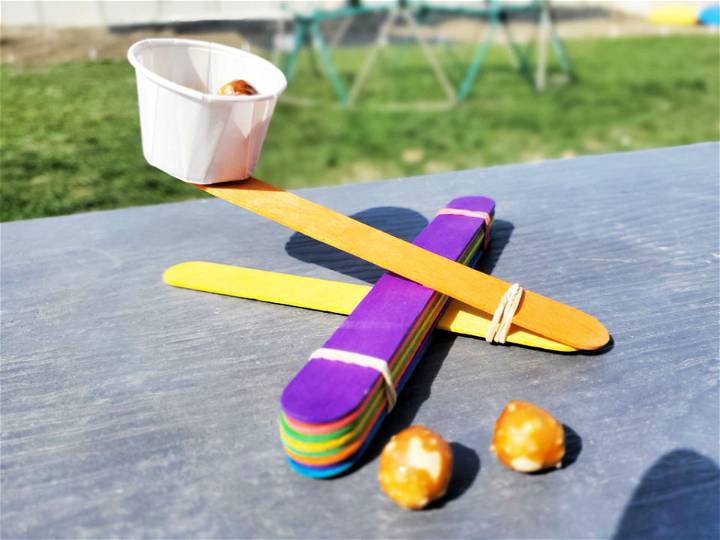
Ready to craft a whirlwind of fun? My Silly Squirts guides you through constructing a DIY popsicle stick catapult that promises to be a hit with the kids. With a few jumbo popsicle sticks, rubber bands, paper shot cups, mini pretzel balls, and a hot glue gun, you can assemble an entertaining launcher in just a few easy steps.
Perfect for a creative afternoon, this project not only sparks joy but also sharpens your little ones' engineering skills. Gather your materials and catapult your way to laughter and excitement as you see who can fling their pretzel ammo the farthest. Get ready for an engaging experience that's sure to keep everyone entertained!
9. Making Your Own Popsicle Stick Catapult
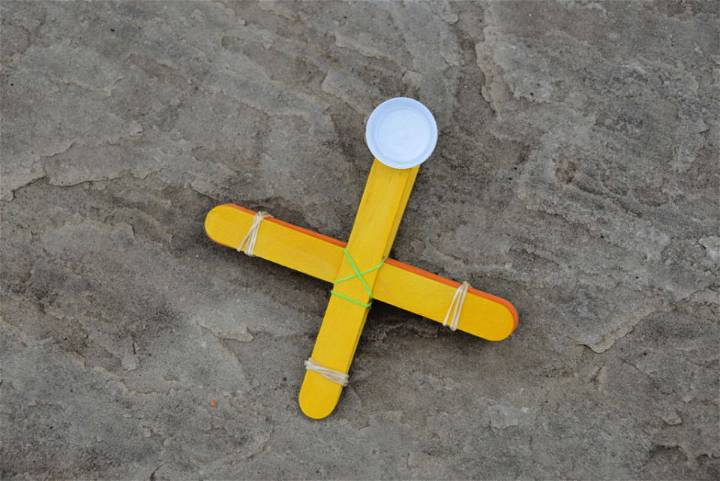
Engage your kids with a hands-on STEM challenge by making a popsicle stick catapult. Emma Vanstone's guide on science experiments for kids Offers a clear and concise way to build these miniature marvels of engineering using simple materials like lolly sticks, elastic bands, and a milk bottle top.
It's an educational activity that illustrates principles of physics, such as energy transfer and Newton's Laws of Motion. With opportunities to add a mathematical twist, children can record distances and scores, turning playtime into a valuable learning experience. Try various designs, from a shoe box to a LEGO catapult, and watch as kids develop problem-solving skills while having fun.
10. Popsicle Stick Catapult Activity for Kids
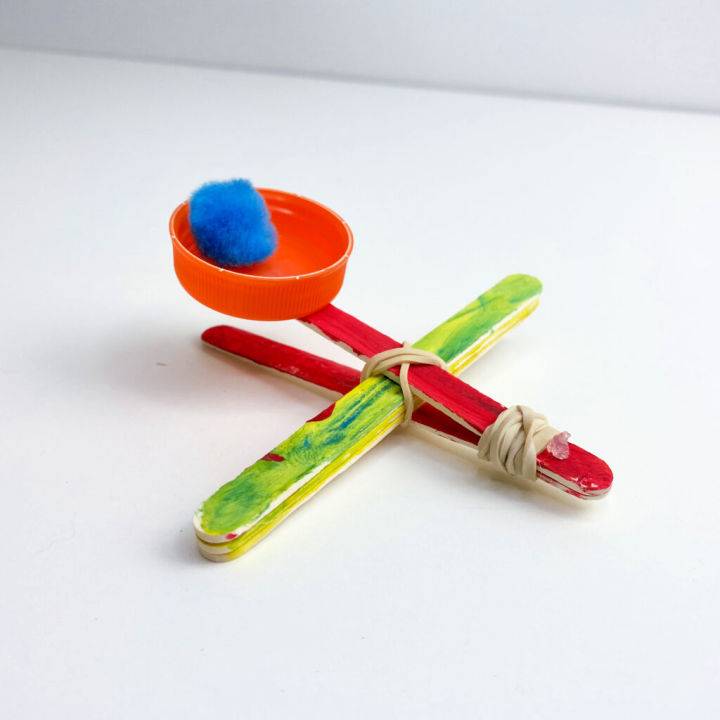
Engage your kids in a hands-on learning adventure with the popsicle stick catapult activity from Fun with Mama. This STEM activity encourages young minds to explore the basics of mechanical engineering and physics through a creative and playful approach.
By crafting their own catapults using simple materials like craft sticks, rubber bands, and bottle caps, children will grasp the engineering process—planning, designing, building, testing, and evaluating. Ideal for K-12 students, the activity promotes problem-solving skills and can be tailored to individual or small-group participation. Get ready to launch into a fun, educational experience that teaches the fundamentals of machinery while firing up the imagination.
11. How Do You Make a Popsicle Stick Catapult
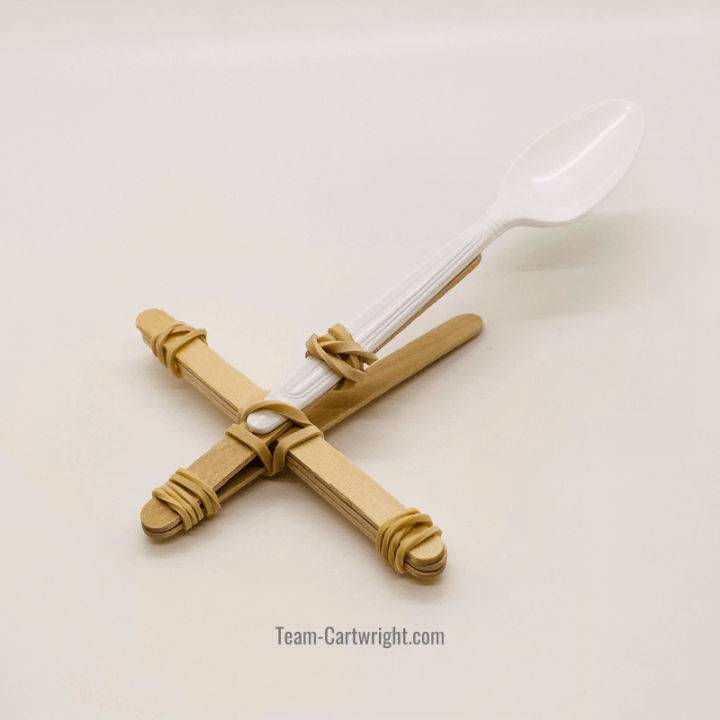
Engage your kids in a playful learning adventure with a DIY Popsicle Stick Catapult from Team Cartwright. This simple craft introduces young minds to fundamental STEM concepts, such as potential and kinetic energy, while sparking their imaginations. With just craft sticks, rubber bands, a plastic spoon, and soft projectiles like puff balls or mini marshmallows, families can make a homemade launcher that's not only entertaining but also educational.
As children build and test their catapults, they'll hone their problem-solving skills and understand basic physics principles through hands-on experimentation. It's a medium-difficulty project suitable for various ages, ensuring an instructive and enjoyable experience for all. Follow the clear and helpful instructions to ensure a safe and exciting science activity that can be enjoyed year-round.
12. DIY Popsicle Stick Catapult With Binder Clips
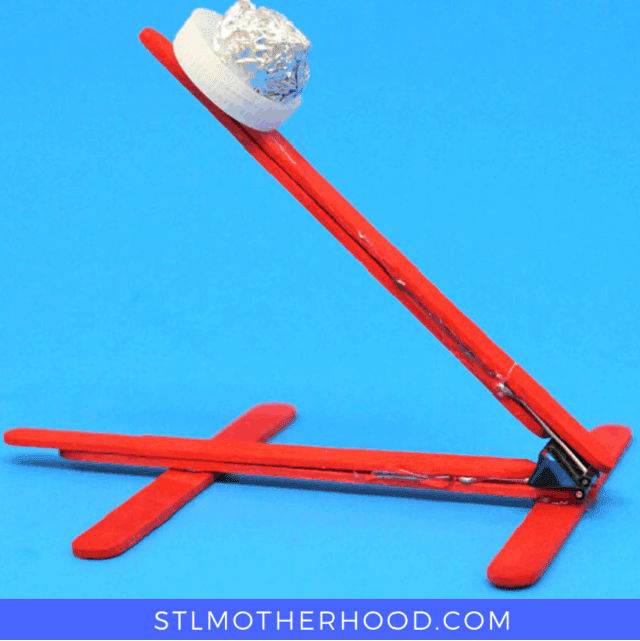
Launch into a fun and educational DIY project with stlMotherhood's guide to making your own popsicle stick catapult, perfect for children and adults alike. By utilizing simple materials like craft sticks, a binder clip, and a bottle cap, you can construct a miniature catapult that boasts an impressive 20-foot range. This engaging activity not only promises a great time but also offers a hands-on approach to learning STEM principles.
Get ready to build your Binder-a-pult 2000, a toy that combines creativity with physics for an exciting learning experience. Assemble your tools, follow the instructive steps, and prepare for some high-flying action with your very own homemade siege engine. Remember to handle the hot glue with care and choose your projectiles wisely for safe and satisfying catapult fun.
13. How to Do Popsicle Stick Catapult
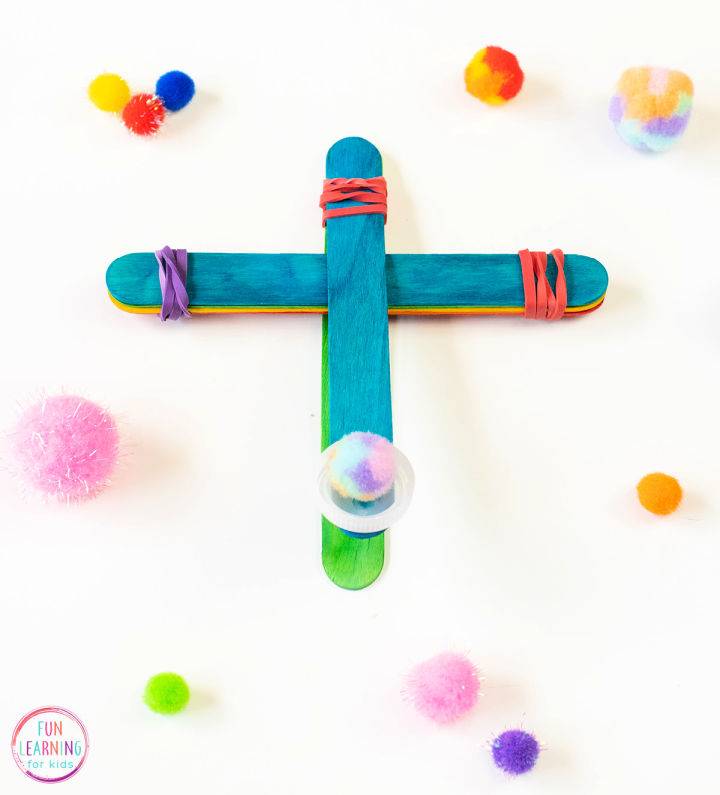
For an engaging and educational experience, explore the mechanics of building a popsicle stick catapult with the guide provided by Fun Learning for Kids. This hands-on STEM activity is designed to spark children's curiosity and engineering skills. By assembling a simple structure using everyday materials like craft sticks, rubber bands, and a bottle cap, kids can delve into the basics of physics.
As they tweak their creations for optimal launching performance, they'll intuitively learn about potential and kinetic energy. Plus, by experimenting with launch angles and rubber band tension, young learners can improve their understanding of force and motion. The step-by-step instructions are easy to follow, making the process a breeze. This catapult project promises a fun way to combine learning with play, offering a memorable and practical science lesson.
14. Popsicle Stick Catapult Tutorial
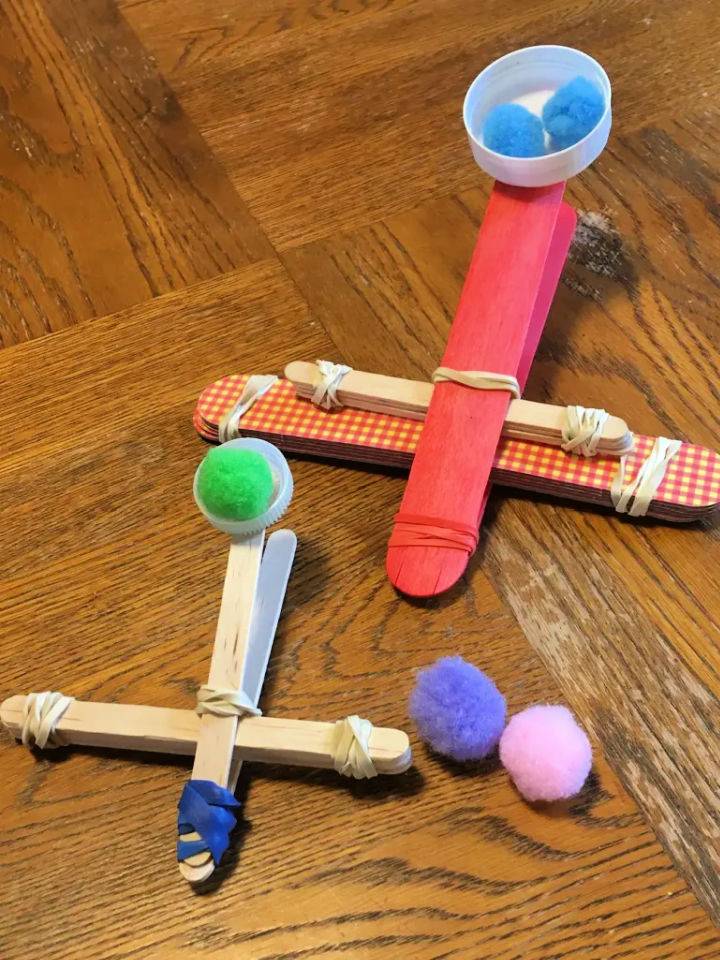
Engage your children in a creative STEM activity by making a popsicle stick catapult, a hands-on project from Mud Paper Scissors. Ideal for developing fine motor skills and understanding basic engineering concepts, this craft invites kids to construct two sizes of catapults—regular and jumbo.
With simple materials like popsicle sticks, rubber bands, and a bottle cap, families can enjoy crafting a functional toy that also sets the stage for fun science experiments. Test different configurations, explore how variables affect launch distance, and inspire young minds with this playful learning experience. Keep it enjoyable and educational as you guide your kids through building and customizing their very own popsicle stick catapult.
15. DIY Catapult With Popsicle Sticks
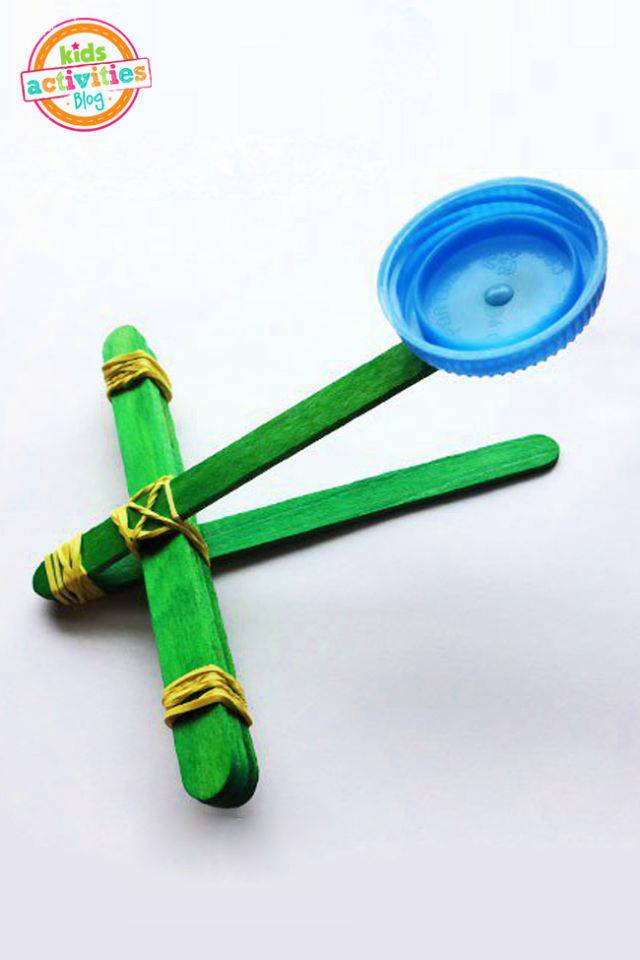
Engage your kids in a playful and educational activity by crafting a simple popsicle stick catapult. Kids Activities Blog offers an easy-to-follow guide for making this fun STEM project. Ideal for children of all ages, this activity not only encourages play but also introduces basic principles of physics.
With just a few materials like craft sticks, rubber bands, and a milk cap, you and your little ones can build a miniature catapult perfect for launching cotton balls or other small objects. As they measure distances and observe how different variables affect the launch, children learn through hands-on experience. Get ready for an entertaining session of building and discovery that can inspire a love for science and creativity in your young learners.
16. Making a Popsicle Stick Catapult
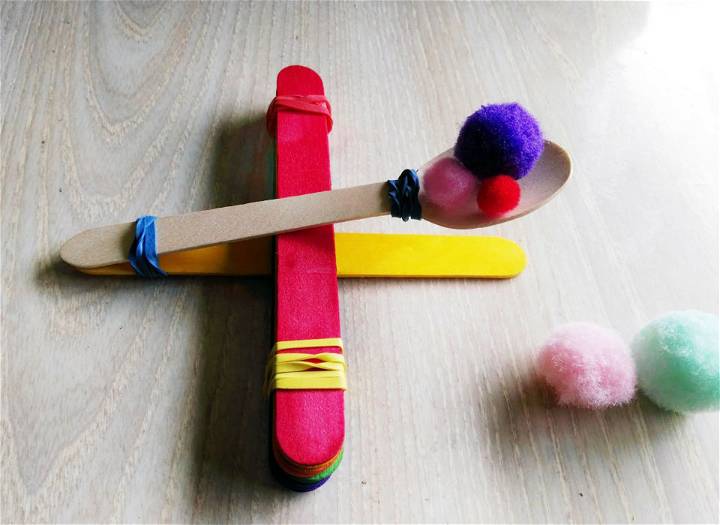
Engage in a fun and educational STEM project with your child by constructing a popsicle stick catapult as outlined by Parenting Place. Ideal for kids aged 5-12, this activity encourages connection, problem-solving, and honing math skills. Gather some simple supplies like popsicle sticks, rubber bands, and a wooden spoon, and start by decorating your spoon.
Then, assemble the sticks into a base, secure them with bands, and attach the spoon to make your lever mechanism. Launch soft items like pom poms or marshmallows and experiment with adjustments to optimize distance. This hands-on craft demonstrates potential energy and gravity in a tangible way, making learning interactive and enjoyable. Perfect for quality time with your child, it's a project that combines crafting with the fundamentals of physics. Medium
17. Easy DIY Popsicle Stick Catapult
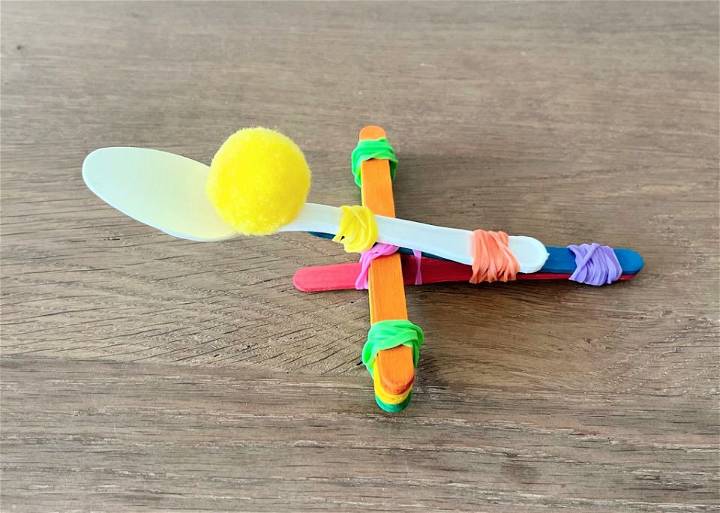
Engage your children in a thrilling hands-on learning experience with the Pompom Launcher activity from STEAM and Make. This instructive project introduces the basic principles of physics and engineering by guiding kids through constructing their very own miniature catapults. By utilizing simple materials like popsicle sticks, rubber bands, and a plastic spoon, young learners delve into the mechanics of levers, explore different launching angles, and test the impact of varying forces.
Ideal for fostering problem-solving skills and encouraging scientific inquiry, this STEAM Activity offers a fun and educational way to explore creativity while gaining valuable insights into the workings of simple machines. Enjoy the excitement as your kids measure distances, aim for targets, and maybe even customize their creations for a personalized touch.
18. How to Make a Lego Popsicle Stick Catapult
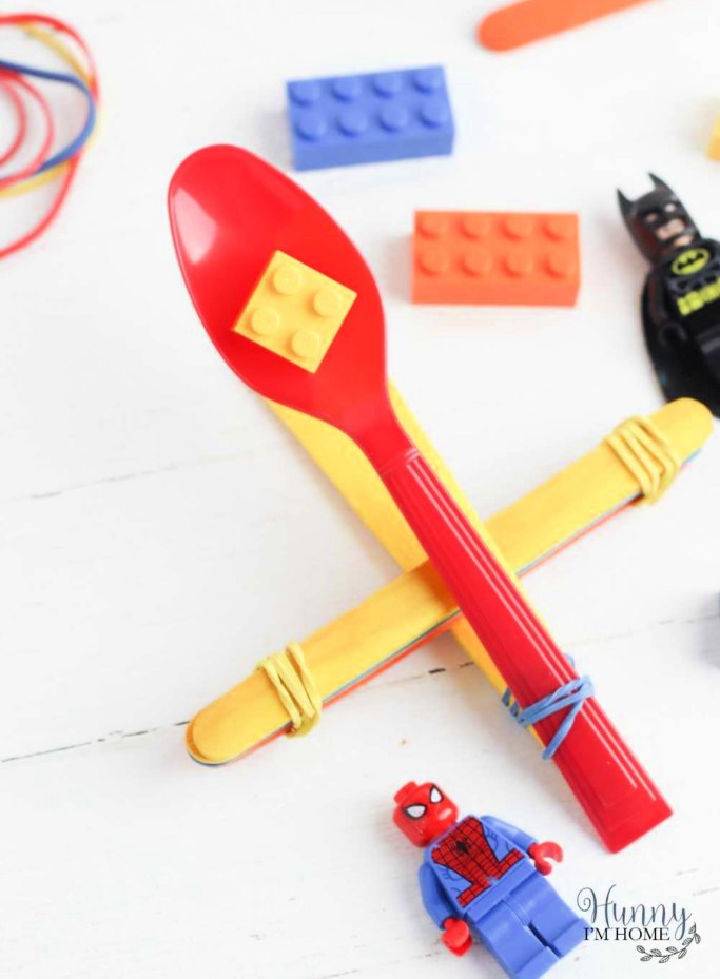
Looking to keep your kids engaged with a hands-on, educational activity? Hunny I'm Home presents a simple yet exciting Lego Popsicle Stick Catapult project that combines creativity with learning. This STEM-inspired craft not only encourages playtime away from screens but also teaches children about science, technology, engineering, and math.
With easy-to-find materials like popsicle sticks, rubber bands, a plastic spoon, and Lego bricks, children can build their own functioning catapult. They'll have a blast launching their Lego pieces while honing their problem-solving and measuring skills. Perfect for rainy days or combatting summer boredom, this catapult activity is a craft that promises fun and learning rolled into one engaging experience.
19. Make Your Own Popsicle Stick Catapult
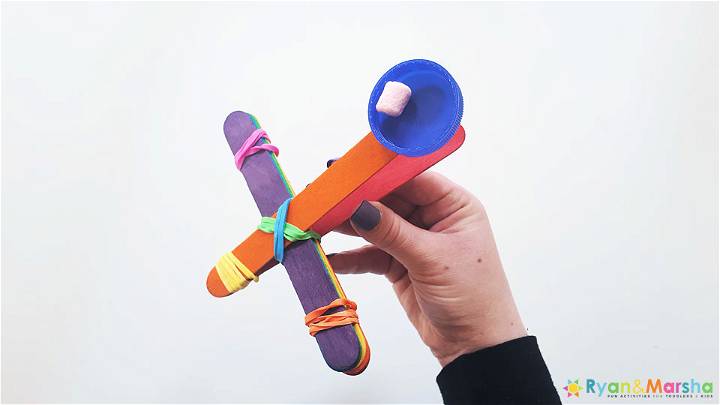
Make a fun and simple catapult using popsicle sticks and everyday items with our engaging guide. Perfect for kids and adults looking to craft a playful projectile launcher, this step-by-step tutorial ensures an enjoyable crafting experience. You'll need 8 popsicle sticks, 5 elastic bands, a water bottle lid, and miniature marshmallows to get started.
Follow clear instructions to stack and secure the sticks using elastic bands, attach the lid with hot glue, and assemble your very own working catapult. Once constructed, place a marshmallow in the lid and watch it fly! This activity is not only a creative endeavor but also a playful way to explore basic physics principles. Join us for more crafting adventures tomorrow! Ryan and Marsha
20. Quick DIY Popsicle Stick Catapult
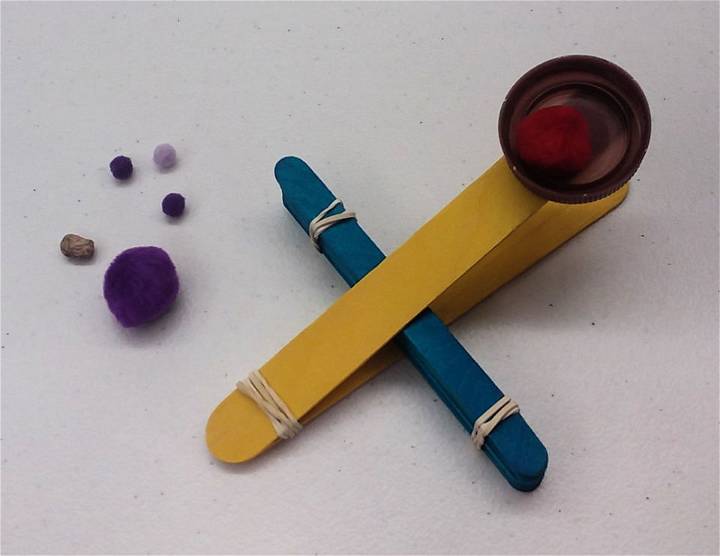
Make a fun and engaging catapult using just popsicle sticks, rubber bands, and a milk jug lid with the help of Eveleth Public Library's simple guide. Gather two larger craft sticks or tongue depressors, eight smaller popsicle sticks, and some small objects to launch.
By stacking and securing these materials with rubber bands and a glue dot, you'll fashion a mini trebuchet perfect for launching pompoms or beans across the room. It's an entertaining way to learn about basic physics and engineering at home. Adjust the flex to see how it changes the flight of your projectiles, and enjoy a hands-on experience that's both educational and exciting!
Conclusion:
In conclusion, mastering the art of making 20 easy popsicle stick catapult designs not only provides a fun and engaging activity but also ignites the spark of creativity and innovation. Through following simple step-by-step guides and utilizing common household items, you can bring these catapults to life.
Ideal for educational purposes, these designs encourage learning physics in a hands-on manner, making it a perfect project for young innovators. Remember to experiment with different materials and designs to discover how you can enhance the distance and accuracy of your catapult. Happy crafting and launching your very own popsicle stick catapult today!



